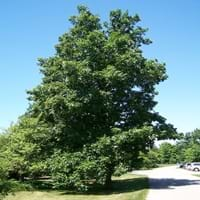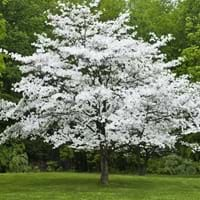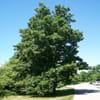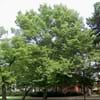Life Span
Perennial
Perennial
Origin
Northeastern United States, Mid-Atlantic United States, Southeastern United States, Central United States, Canada
China, Japan, Korea
Types
Northern shagbark hickory, Southern shagbark hickory
Chinese kousa dogwood, Blue Shadow kousa, Weaver's Weeping dogwood
Habitat
Woodland Garden Canopy
gardens, Near ponds, Wet Woods
USDA Hardiness Zone
4-8
5-8
Sunset Zone
Not Available
2a, 2b, 3a, 3b, 4, 5, 6, 7, 8, 9, 14, 15, 16, 17
Habit
Oval or Rounded
Spreading
Flower Color
Not Available
White, Green
Flower Color Modifier
Bicolor
Bicolor
Fruit Color
Not Available
Red
Leaf Color in Spring
Not Available
Light Green
Leaf Color in Summer
Not Available
Green
Leaf Color in Fall
Not Available
Red, Purple, Burgundy
Leaf Color in Winter
Not Available
Not Available
Plant Season
Spring, Summer, Fall
Spring, Summer, Fall, Winter
Sunlight
Full Sun
Full Sun, Partial Sun, Partial shade
Type of Soil
Loam, Sand
Loamy, Moist
The pH of Soil
Acidic, Neutral
Acidic, Neutral
Soil Drainage
Well drained
Well drained
Bloom Time
Not Available
Late Spring, Early Summer
Tolerances
Not Available
Humidity, Light Frost
Where to Plant?
Ground
Ground
How to Plant?
Seedlings
Seedlings, Stem Cutting
Plant Maintenance
Medium
Medium
Watering Requirements
Average Water Needs
Allow to dry out slightly between watering, occasional watering once established
In Summer
Lots of watering
Lots of watering
In Spring
Moderate
Moderate
In Winter
Average Water
Average Water
Soil pH
Acidic, Neutral
Acidic, Neutral
Soil Type
Loam, Sand
Loam, Moist, Well drained
Soil Drainage Capacity
Well drained
Loamy, Well drained
Sun Exposure
Full Sun
Full Sun, Partial Sun, Partial shade
Pruning
Remove damaged leaves, Remove dead branches, Remove dead leaves
Prune if you want to improve plant shape, Prune lower leaves, Prune once the plant is tall enough
Fertilizers
Apply 10-10-10 amount
Fertilize in early spring, Mulch
Pests and Diseases
Leaf spot, Powdery mildew, Trunk Rot, Verticillium Wilt
Crown rot, Leaf spot, Red blotch, Whiteflies
Plant Tolerance
Drought
Humidity, Light Frost
Flowers
Insignificant
Showy
Flower Petal Number
Not Available
Single
Foliage Texture
Not Available
Medium
Foliage Sheen
Not Available
Glossy
Attracts
Mice, Red and Gray Squirrels
Birds, Butterflies, Hummingbirds, Squirrels
Allergy
breathing problems, Mouth itching, Sore Throat, Swelling, Throat itching
allergic conjunctivitis, Headache, Pollen
Aesthetic Uses
Not Used For Aesthetic Purpose
Beautification, Cottage Garden, Showy Purposes
Beauty Benefits
Moisturizing
For treating wrinkles, Makes teeth white, Making cosmetics, Skin cleanser
Environmental Uses
Air purification
Forms dense stands, Nesting sites for birds, Shadow Tree, soil stabilisation
Medicinal Uses
Analgesic, Antirheumatic
Acne, Antibiotic, Appetite enhancer, Cough, Diuretic, Emollient, Nutrients, Weight loss
Part of Plant Used
Sap, Seeds
Bark, Flowers, Fruits, Leaves
Other Uses
Used as an excellent fuel, Used in pies, cakes, Used to make yellow dye, used to prepare nut milk
Application in Handicrafts, Decoration Purposes, Grown for shade, Used as Ornamental plant
Used As Indoor Plant
No
No
Used As Outdoor Plant
Yes
Yes
Garden Design
Edible, Shade Trees
Feature Plant, Shade Trees
Botanical Name
CARYA ovata
CORNUS kousa 'China Girl'
Common Name
Shagbark Hickory
China Girl Dogwood, Kousa Dogwood
In Hindi
Shagbark Hickory
Cornus kousa
In German
Shagbark Hickory
Blüten-Hartriegel
In French
Caryer ovale
Cornouiller à fleurs
In Spanish
Shagbark Hickory
Cornus kousa
In Greek
Shagbark Hickory
Cornus kousa
In Portuguese
Shagbark Hickory
Cornus kousa
In Polish
ORZESZNIK PIĘCIOLISTKOWY
Cornus kousa
In Latin
Carya
Cornus kousa
Phylum
Magnoliophyta
Magnoliophyta
Class
Magnoliopsida
Magnoliopsida
Order
Juglandales
Cornales
Family
Juglandaceae
Cornaceae
Clade
Angiosperms, Eudicots, Rosids
Angiosperms, Asterids, Eudicots
Tribe
Juglandeae
Not Available
Subfamily
Juglandoideae
Not Available
Number of Species
Not Available
Not Available
Importance of Shagbark Hickory and Kousa Dogwood
Want to have the most appropriate plant for your garden? You might want to know the importance of Shagbark Hickory and Kousa Dogwood. Basically, these two plants vary in many aspects. Compare Shagbark Hickory and Kousa Dogwood as they differ in many characteristics such as their life, care, benefits, facts, etc. Every gardener must at least have the slightest clue about the plants he wants to plant in his garden. Compare their benefits, which differ in many ways like facts and uses. The medicinal use of Shagbark Hickory is Analgesic and Antirheumatic whereas of Kousa Dogwood is Acne, Antibiotic, Appetite enhancer, Cough, Diuretic, Emollient, Nutrients and Weight loss. Shagbark Hickory has beauty benefits as follows: Moisturizing while Kousa Dogwood has beauty benefits as follows: Moisturizing.
Compare Facts of Shagbark Hickory vs Kousa Dogwood
How to choose the best garden plant for your garden depending upon its facts? Here garden plant comparison will help you to solve this query. Compare the facts of Shagbark Hickory vs Kousa Dogwood and know which one to choose. As garden plants have benefits and other uses, allergy is also a major drawback of plants for some people. Allergic reactions of Shagbark Hickory are breathing problems, Mouth itching, Sore Throat, Swelling and Throat itching whereas of Kousa Dogwood have allergic conjunctivitis, Headache and Pollen respectively. Having a fruit bearing plant in your garden can be a plus point of your garden. Shagbark Hickory has no showy fruits and Kousa Dogwood has showy fruits. Also Shagbark Hickory is not flowering and Kousa Dogwood is not flowering . You can compare Shagbark Hickory and Kousa Dogwood facts and facts of other plants too.





